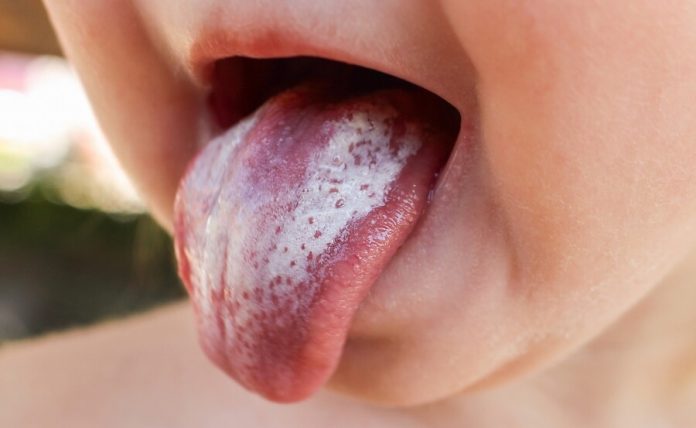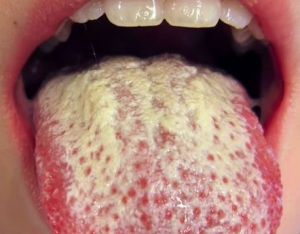
While this fungi-caused condition may look terribly debilitating and even downright horrid, it’s actually caused by one of the most common organisms in the human body – candida– and the cure is not at all complicated.
In short, it’s nasty looking, but not excessively dangerous – and it’s also not contagious.
Before talking about the disease, let’s take a look at the main cause – a fungus called Candida Albicans.
Candida Albicans
Candida Albicans accounts for more than 50% of the oral candidiasis, and it’s the main pathogen – the infecting organism – involved in oral thrush.
This type of candida is no stranger to the human body – the vast majority of people either carry it right now, or are going to carry it at some point in their lives.
The fungi is often part of the intestinal gut. So often, in fact, that about 70% of the population carries it in their intestinal flora. Though this figure may seem high, most of the time this type of candida is harmless, since it’s kept in check by the rest of the bacterial flora.
Aside from the gut, candida albicans is also present in the mouth. About 50% of the world’s population carries it and, again, it’s not usually dangerous.
The real problem comes when this organism grows to disproportionate numbers – a process known as candida overgrowth. This may be caused by a variety of factors, from a course of antibiotics to an imbalanced diet to bad oral hygiene. Several diseases also cause an increase in the population of candida albicans, such as AIDS, cancer, vaginal yeast infections and diabetes mellitus.
Oral Thrush
 Oral thrush, also known as pseudomembranous candidiasis, is the most common form of oral candidiasis, accounting for 35% of all cases.
Oral thrush, also known as pseudomembranous candidiasis, is the most common form of oral candidiasis, accounting for 35% of all cases.
Symptoms
Regardless of the cause, this mycosis usually shows the same common symptoms: creamy white patches in the mouth, gums, tonsils and throat, swelling of the oral tissue and sometimes lesions of the mouth.
While most of the times these ugly patches are the only symptoms, occasionally more severe signs might appear, depending on how bad the infection is. A blistering sensation in the mouth, loss of taste, difficulty swallowing (if the infection is localized in the throat) and hoarseness (if the trachea and the larynx are infected) are all possible signs of oral thrush. Left untreated, the candida in the mouth may move to other regions of the body, leading to even worse conditions such as infections of the lungs or the intestines. However, such cases are rare and usually happen to those whose immune systems are weakened and who neglect the initial symptoms.
Target population
This condition generally affects babies and the elderly, as well as people whose immune systems have gone through considerable stress – either as a result of poor diet or as a consequence of a disease.
Treatment
In healthy organisms, oral thrush can be easily treated with antifungal medicines. Some of them can be applied directly on the infected region, but there are some pills that are administered orally.
Prevention
Oral hygiene is the best prevention against thrush. Brushing daily, flossing, and taking good care of your dentures will significantly lower the risk of getting thrush.
Conclusion
Oral thrush is a relatively common oral mycosis, and it’s generally easily preventable and treatable. Since it’s not contagious, it shouldn’t discourage social contact, despite its uninviting appearance. Though complications are not very common, it’s best to go to the doctor as soon as you notice the first symptoms; this way you make sure that you prevent further infections, as well as unpleasant common symptoms such as hard swallowing or bleeding of the mouth.
Resources
http://www.mayoclinic.org/diseases-conditions/oral-thrush/basics/definition/con-20022381
https://en.wikipedia.org/wiki/Oral_candidiasis
https://en.wikipedia.org/wiki/Candida_albicans
http://www.nhs.uk/conditions/Oral-thrush—adults/Pages/Introduction.aspx
http://emedicine.medscape.com/article/969147-clinical

